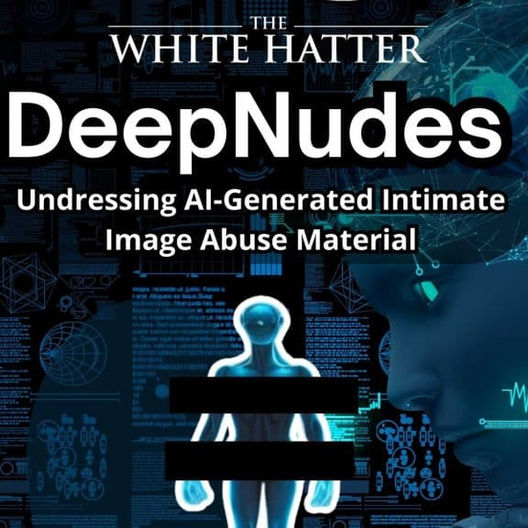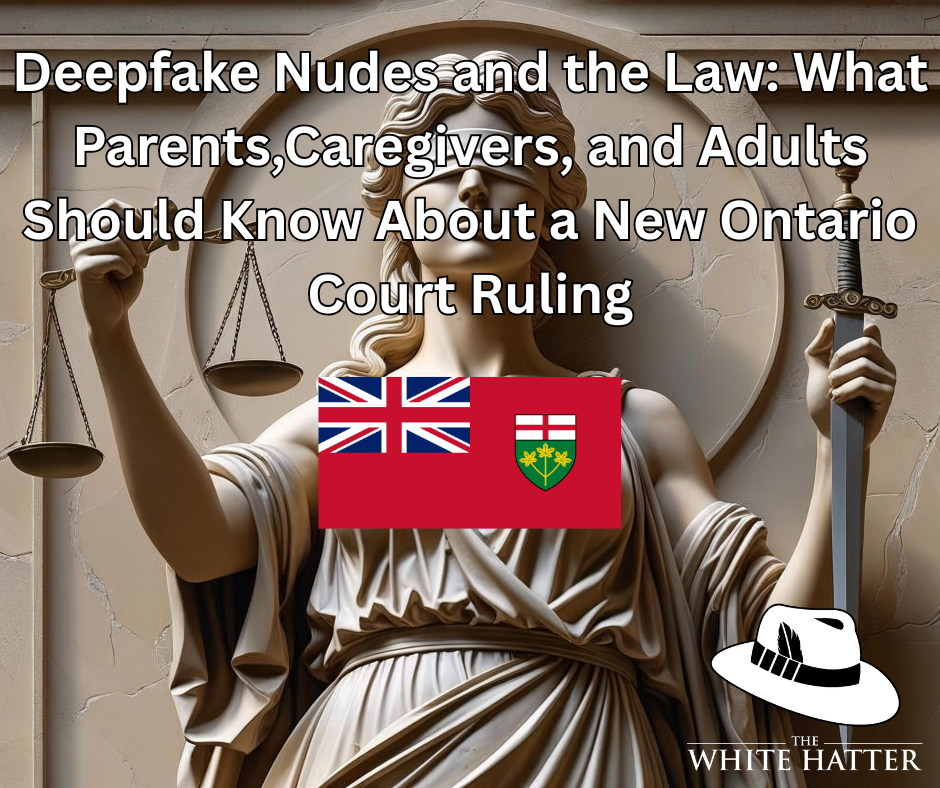Why Teens Are Starting To Tune Out of Social Media and Turning to Private Chat Platforms.
- The White Hatter

- Jul 26
- 7 min read

If you have noticed your youth or teen spending less time on Instagram or TikTok and more time in private chats on Discord, iMessage, or Snapchat, you are not imagining things. There is a quiet shift happening in how young people are using technology, and it’s one many adults, companies, and even tech analysts have not fully caught on to….. yet! There are a few exceptions, for instance, the search engine DuckDuckGo now allows users to filter out AI-generated images from its search results. (1)
Youth and teens are not tired of their devices, they are tired of what is on them. More specifically, they’re getting fed up with what some now call “AI slop”, a term used to describe the wave of low-effort, algorithmically generated content filling their social media feeds. This includes everything from generic motivational reels, clickbait advice, deepfake clips like the Sasquatch talking like a human and doing human things, spammy product promotions, and stitched together remixes that feel impersonal or irrelevant. It is not that all AI generated content is a problem. Many youth and teens use AI tools themselves, from editing videos, writing code, to using AI to search topics with more intention. However, what they are pushing back on is the volume and tone of content that feels like it was made at them, and not for them.
As one teen recently told us, “I open TikTok and don’t even see my favorite influencers anymore, it’s just junk, it’s not fun, and it’s becoming very exhausting.”
That exhaustion is starting to show. Youth and teens have being sharing with us that social media no longer feels social. Instead of seeing posts from people they care about, they feel buried under AI slop designed to grab attention, not build connection. It has become performative, polished, and often pointless.
In response, more young people are shifting away from public-facing platforms and gravitating toward smaller, more private digital spaces, places where they can connect with people they actually know, in ways that feel more spontaneous and authentic, and does not have a lot of AI slop, if any.
Here is where they are saying they are going with increasing frequency:
Discord: Once just a gamer hangout, Discord has evolved into a central hub for everything from friend groups and fandoms to study sessions. Teens appreciate the privacy of invite-only servers, where they can control what they see and who they interact with.
iMessage and Group Chats: Traditional texting is getting a second life. Group chats let teens stay connected with close friends in a space free from likes, followers, or public pressure.
Snapchat: With its ephemeral messaging and friends-only approach, Snapchat still feels more direct and “real” to many teens, despite valid concerns about privacy. Although, teens are telling us that their “for you feed” is also becoming an AI slop quagmire.
WeChat: Popular within some cultural communities, WeChat offers messaging, video, and phone calls all in one place, often within tight knit social circles.
With this shift toward more private chat platforms, we've identified both benefits and drawbacks.
Benefits:
1. Stronger, More Authentic Connections
In smaller, private digital spaces, like close-friend groups on Snapchat, private Discord servers, or iMessage threads, youth and teens are more likely to interact with people they actually know in real life. This reduces the pressure to curate a perfect image and allows them to express themselves more honestly. They can share inside jokes, talk casually, and connect on their own terms without worrying about how it might look to hundreds or thousands of followers.
2. Reduced Exposure to AI-Generated Content (“AI Slop”)
In private spaces, especially those that are invite-only or not heavily algorithm-driven, youth and teens can create and share content that feels more human, meaningful, and relevant to their actual lives. This shift reflects a growing desire for more control over the quality and tone of what they see online.
3. Increased Sense of Safety and Control
When youth and teens move into smaller circles of trusted peers, they often report feeling safer and more in control. They can choose who they engage with and are less exposed to anonymous trolls, predators, or random strangers. This can help reduce anxiety, limit cyberbullying, and promote healthier digital boundaries.
4. More Spontaneity and Real-Time Engagement
Unlike the carefully edited and scheduled nature of content on TikTok or Instagram, private chats often support fast, unscripted interaction. Youth and teens can send voice notes, memes, or quick thoughts without editing or overthinking. These interactions tend to be more playful and reflect how they communicate in real life, helping to maintain deeper social bonds, especially in times when physical interaction is limited.
Drawbacks:
1. Harder for Parents and Educators to Supervise
One of the main challenges with private digital spaces is visibility. Parents, caregivers, and educators often rely on public platforms to get a general sense of what their kids are doing online. With private chats, that window closes. It becomes more difficult to spot red flags like bullying, sextortion, inappropriate content sharing, or mental health struggles. Some platforms even have disappearing messages or encryption, which makes monitoring close to impossible.
2. Less Transparency and Accountability
In public online spaces, there are often community standards, reporting systems, and third-party moderation. In private chats, those safeguards are either minimal or non-existent. Harmful behaviour, like sharing explicit images, engaging in peer pressure, or excluding someone from a group, can go unchecked. This creates an environment where accountability may be weak, especially if young people fear being seen as “snitches” for speaking up.
3. Risk of Echo Chambers
Private spaces can limit exposure to diverse viewpoints. If a group of peers reinforces the same opinions or values, especially if those views are problematic, young people may not get the outside input they need to critically reflect or grow. This is particularly concerning in situations involving misinformation, body shaming, or normalizing risky behaviours like vaping or non-consensual image sharing.
4. Can Be Difficult to Exit Toxic Group Dynamics
In public platforms, it’s often easier to unfollow, block, or disengage from toxic behaviour. But in private group chats, especially ones tied to real-world relationships, leaving a group can come with social consequences. Youth and teens might fear being excluded from friend groups at school, being targeted for leaving, or losing important social status. This can keep them trapped in harmful dynamics even when they want out.
5. Public, Permanent, Searchable, Exploitable, Copiable, and Shareable
Even though youth and teens are using so-called “private” platforms, many may believe that what they share will stay within that closed circle. Unfortunately, that’s not always the case. Messages can be screenshotted, screen recorded, copied, or forwarded without their knowledge or consent. Just because a platform is labeled “private” doesn’t mean it’s secure or truly confidential. This false sense of privacy can lead to risky choices, especially when it comes to sharing personal information, images, or opinions that could be misused or taken out of context. It’s important for young people to understand that privacy online is never guaranteed no matter what the platform.
This migration by youth and teens is not just a phase or a platform preference, it is clearly about control of their content. Youth and teens are seeking online spaces where they have more say over what they see, how they interact, and who has access to them. In an environment saturated with algorithms and monetized engagement, they are choosing conversations over content, likes, or follows.
A 2023 report by Common Sense Media found that nearly half of youth and teens said they prefer messaging apps over public feeds when it comes to connecting with friends. (2) It is not that they have abandoned social media entirely, but they are becoming more selective about how and where they use it. Note this study is two years old, and since then we would suggest even more teens prefer messaging apps over public feed on social media platforms to stay connected with each other.
We believe that if major platforms do not adapt, they risk losing more than just attention, they risk losing an entire generation of users. We also believe that if a new social media platform comes to market, that offers “old school” functionality where AI slop is filtered out, such a platform could become the next biggest trend with todays youth and teens.
Youth and teens are early adopters and cultural trendsetters. If they begin to view traditional social media as irrelevant or out of touch, that perception could stick well into adulthood. We have already seen what happened with Facebook, which went from cutting-edge to “for old people” in just a few years.
We believe, given what we are anecdotally hearing from youth and teens, social media companies that don’t offer spaces for real connection, and instead overwhelm youth and teen feeds with manipulative, AI-driven content, risk becoming irrelevant. They may fade into the background of the digital lives of this generation and the one that follows.
This shift offers a valuable window into how youth and teens are thinking. Despite the stereotypes, many are not mindlessly scrolling. They are making thoughtful choices about what spaces feel healthy and where they feel seen. For parents and caregivers, this is a reminder to stay curious, not critical. Ask your child where they are spending time online, and why. These conversations can reveal a lot about what they value, what they are avoiding, and how they are navigating an increasingly automated onlife world.
This is not the end of social media, but it may be the end of an era. Youth and teens are not just consuming whatever is put in front of them. They are filtering, opting out, and carving out spaces that feel more human in an onlife world that increasingly does not.
Digital Food For Thought
The White Hatter
Facts Not Fear, Facts Not Emotions, Enlighten Not Frighten, Know Tech Not No Tech
References:














